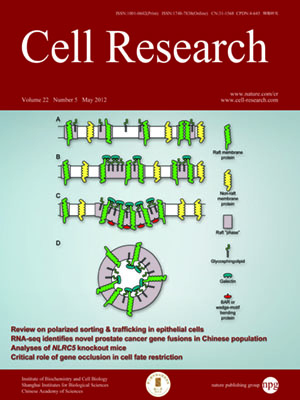
Advanced Search
Submit Manuscript
Advanced Search
Submit Manuscript
Volume 22, No 5, May 2012
ISSN: 1001-0602
EISSN: 1748-7838 2018
impact factor 17.848*
(Clarivate Analytics, 2019)
Volume 22 Issue 5, May 2012: 848-848
Jedidiah Gaetz1, Kayla L Clift1, Croydon J Fernandes1, Frank Fuxiang Mao1,2, Jae Hyun Lee1, Li Zhang1, Samuel W Baker1, Timothy J Looney1, Kara M Foshay1
1Department of Human Genetics, University of Chicago, Howard Hughes Medical Institute, Chicago, IL 60637, USA
2Center for Stem Cell Biology and Tissue Engineering, Sun Yat-sen University, Guangzhou 510080, China
Correspondence: Bruce T Lahn,(blahn@bsd.uchicago.edu)
The progressive restriction of cell fate during lineage differentiation is a poorly understood phenomenon despite its ubiquity in multicellular organisms. We recently used a cell fusion assay to define a mode of epigenetic silencing that we termed “occlusion”, wherein affected genes are silenced by cis-acting chromatin mechanisms irrespective of whether trans-acting transcriptional activators are present. We hypothesized that occlusion of lineage-inappropriate genes could contribute to cell fate restriction. Here, we test this hypothesis by introducing bacterial artificial chromosomes (BACs), which are devoid of chromatin modifications necessary for occlusion, into mouse fibroblasts. We found that BAC transgenes corresponding to occluded endogenous genes are expressed in most cases, whereas BAC transgenes corresponding to silent but non-occluded endogenous genes are not expressed. This indicates that the cellular milieu in trans supports the expression of most occluded genes in fibroblasts, and that the silent state of these genes is solely the consequence of occlusion in cis. For the BAC corresponding to the occluded myogenic master regulator Myf5, expression of the Myf5 transgene on the BAC triggered fibroblasts to acquire a muscle-like phenotype. These results provide compelling evidence for a critical role of gene occlusion in cell fate restriction.
Cell Research (2012) 22:848-858. doi:10.1038/cr.2011.190; published online 29 November 2011